At the Heart of a Lion.
What brings down a rather newly commissioned airliner?
That is the key question amid the disintegrated debris field of this week’s Lionized jet crash, shortly after takeoff from Jakarta, Indonesia. 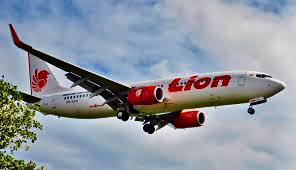
Barely minutes aloft, the pilot of Lion Air’s flight JT 610 radioed the Soekarno-Hatta airport tower, requesting to “return to base”, as his 737 MAX 8 was failing to climb much beyond 5,200 feet: something was technically wrong. By 12 ½ minutes the plane, with 181 passengers and crew of 8, had dropped 500 feet, banked left, then slammed into the Java Sea at a speed of 400 m.p.h., in less than a minute, with no survivors.
Flight 610 had taken off at 6:30 AM, bound for Pangkal Pinang (an island chain off Sumatra) on a largely clear, windless day. The MAX 8 was only two months old (with a range of 3,550 nm)—one of 11 already in service for low-cost giant Lion Air, plus 218 craft still on order from Chicago-based Boeing Corporation. This was the first incident involving the MAX 8, introduced earlier this year as a replacement for the company’s popular single-aisle model 800. It is already the fastest selling model in Boeing’s product line, and Lion is one of its largest buyers.
So, Whiskey, Tango Foxtrot?
Apparently, 610’s pilot had mentioned a “technical problem” with this particular craft on an earlier flight from Bali, but that it had “been resolved.” Turns out it may have been a recurring airspeed/altitude instrument snafu, whereby data readings to the cockpit crew could have been rendered inaccurate and/or disagreeable between screens—for all intents and purposes unreliable.
One source of the indicator problem might very well be the plane’s Pitot-Static system, in that these sensors can be thrown off by anything from bugs to ice. This has happened before, having likely contributed to other plane crashes, namely Air France 441 in 2009 and a subsequent Malaysia Airlines flight over the Pacific. Then again, this could be an entirely different flaw within the new MAX 8 model.
Lion Declawed.
In any case, JT 610 is the worst crash in Indonesia since an Air Asia flight in December, 2014, a similar ocean plunge that took 162 lives. It comes at a time when Palu Airport had just crumbled in the Indonesian earthquake and tsunami, and when millions of natives and tourists flock to Lion Air to avoid the perils of aging ferry transport about some 1,300 islands.
Yet a rapidly growing Lion Air is struggling to meet passenger demand with overstretched capacity, not to mention a spotty safety record. In fact, the airline had been banned by the EU (a no-fly blacklisting) over safety concerns—reinstated earlier this year. The U.S. lifted its 10-year ban in 2016, the FAA having long given Lion a Category 2 deficiency ranking. 
Among the problems: lax safety and maintenance standards, outdated flight and ground crew training (especially on new technology like the MAX 8’s). Moreover, former Lion employees claim the carrier employs pilots as temporary workers, then over- schedules them for long (up to 22 hour) days. The result? low crew morale, union/strike busting, poor takeoff check lists, even overshooting runways–with rumors of pilots using drugs to keep flying (unlike in the case of a recent Japan Airlines pilot, who tried to take off fully ‘loaded for beer’). They further suggest that Lion fends off such criticism (and regulatory oversight) by maintaining strong connections with the politicos in power—party animal that it seems to be.
A Favored Pet Partner.
Still, Lion Air remains one of Boeing’s major 737 series customers, albeit with Airbus A320s making their way into the Lion’s den. But the U.S. manufacturer has been scrambling to meet the carrier’s order backlog since the spring ’18 MAX 8 launch, hitting some taxing production snags all summer long. Delivery of engines and fuselages sidelined unfinished planes for weeks on end, while installation chaos at its Renton, Washington plant forced massive labor overtime and the shuffling in of inexperienced workers.
Boeing maintains that it continues to deliver its entire model line as promptly and safely as possible, will 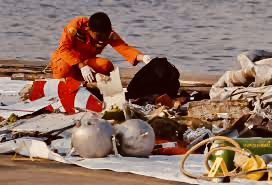 fully cooperate with and “provide technical assistance at the request and under the direction of government authorities investigating the accident.” This includes Lion Air, the Indonesian Ministry of Transportation and the NTSB, since the aircraft was built in the U.S.
fully cooperate with and “provide technical assistance at the request and under the direction of government authorities investigating the accident.” This includes Lion Air, the Indonesian Ministry of Transportation and the NTSB, since the aircraft was built in the U.S.
The focus at the moment is on retrieving JT 610’s black box data/voice recorders in choppy but relatively shallow (100-115 ft. deep) West Java waters (battered flight data recorder since found by divers). Suspensions of Lion engineering and fleet maintenance managers have already resulted. To come will be a governmental evaluation of Indonesian air safety systems, particularly regarding low-cost carriers. Now it remains to be discovered what was at the heart of this Lion’s demise…which of course Vamigré will follow without fear or flinching…
UPDATE: For starters, flight-tracking website data suggests that the ‘technical problem’ on the earlier Bali leg of JT 610 had not in fact been resolved (indeed, possibly bad sensors and/or air speed indicators on the craft’s past four flights). That similar erratic speed and altitude readings may have been downplayed by that cockpit crew, rescinding its “Return to Base (RTB)” request. Finding the Flight voice recorder will likely shed light on this pilot-to-tower operating sequence. Meanwhile, the bodies and Max 8 fuselage retrieval process continues in grim earnest…
The JT 610 latest is an FAA airworthiness directive (and Boeing Global Bulletin) for all 45 or so Max 8s in current operation. Concern centers around the model’s flight control software itself, designed to prevent nose-up stalling—glitches that can possibly confuse pilots when they are flying manually and lead to a sudden, steep descent. More specifically, malfunctioning ‘angle of attack’ sensors measuring oncoming wind direction could provide erroneous/faulty data—say a flood of cautions and warnings to cockpit displays. Should pilots mis-respond to such conflicting information, automated Max 8 (and Max 9) safety systems can, at worst, override their manual inputs and trigger a noseover-type maneuver the likes of 610’s demise. In essence, foul data up, nose down—unless manually overridden through sufficient pilot training and experience, by powering off stabilizer motors or strongly yoking back.
The agency and Boeing stress that the directive is preliminary, and may not necessarily result in the mandated replacement of current onboard software systems, merely require airlines to incorporate more targeted operational instructions in their Max 8/9 variant flight manuals—a so-called ‘reminder of existing procedures’. Meanwhile, the NTSB holds open a number of potential factors in this Lion Air crash, such as pilot misinterpretation of the flight control data or improperly reacting to the display readings at hand.
All authorities caution that this investigation is at an early stage (indeed 610’s Cockpit Voice Recorder has yet to be lifted from the debris field)—too soon to determine whether the crash was caused by new model design flaw, pilot error, maintenance mismanagement, or a fatal mix of same. For instance, could this  mishap have been product of a comparatively inexperienced, lower tier cockpit crew being pressured to fly an aircraft with cited flight data control system problems, by a grow-crazy 20 year-old airline already known for training and maintenance shortfalls, if not actually fudging pilot/maintenance logs? Was it a matter of flying repeatedly more than flying right?
mishap have been product of a comparatively inexperienced, lower tier cockpit crew being pressured to fly an aircraft with cited flight data control system problems, by a grow-crazy 20 year-old airline already known for training and maintenance shortfalls, if not actually fudging pilot/maintenance logs? Was it a matter of flying repeatedly more than flying right?
So Vamigré will continue to track developments regarding this tragic 737 accident: As U.S., Indonesian and Boeing agencies typically sort through (and deflect/deny) responsibility—particularly if and when the Lion rears its battered remains…
FURTHER DOWNDRAFT: Now the JT 610 investigation banks sharply left—or in this case, out of left field, as it surfaces that 737 MAX 8 maker, Boeing admits to not initially and fully apprising Lion Air and all other airline customers of their brand new 8/9 variants’ advanced automated flight-control systems.
Essentially, the aircraft builder neglected to clearly, completely advise flight crews on the new-gen stall-prevention data system in its operating manual, or authoritatively recommend updated simulator AFC training. After internal debate, Boeing apparently determined that detailed coverage of MCAS in its operating manuals or enhanced simulator training wasn’t a priority. So it didn’t comprehensively alert carriers/pilots to the 8’s system changes, because it decided against burdening everyday and overworked pilots with more technical information than they needed or could absorb.
Call it dumbing down the data for already inundated cockpit crews. But this less-is-more approach to air safety may prove to be at the heart of JT 610’s fatal demise.
So an inadequate Boeing ‘heads-up’ becomes a flat-out emergency directive after the fact. Meanwhile, carrier and crew training must wait for new flight simulators, and undertake the required memorizing of steps to manually override the 8’s new anti-stall system, should it misread and screen faulty data, wrongly trigger a dangerous nosedive or otherwise malfunction.
And Boeing veers toward becoming in effect an outlier in the current aviation security culture. So watch the lawsuits begin…
Airline pilots are reportedly aghast and incredulous at this development, yet vow that Boeing’s system revisions and/or software fixes will only make today’s statistically safe air travel all the safer.
MORE TAILSPIN: As the JT 610 crash investigation fades into crosswind incrimination, into bureau/industrial inertia and stalls, an update on the denials and downdrafts: While the doomed craft’s black box voice data recorder has yet to be uncovered amid the sea floor’s field of bodily remains, passenger debris and fuselage ‘skin’ at the crash site, its retrieved flight data recorder (all 1,790 parameters) has already yielded some alarming information.
Essentially, the 737 Max 8’s nose was automatically forced downward after takeoff, its ill-prepared pilots’ frantically attempting to override the system and pull up from the nosedive all the way into the Java Sea. The key question from this early stage data is: How and why did this fatal struggle ensue?
The joint investigation, led by the Accident Subcommittee of Indonesia’s National Transportation Safety 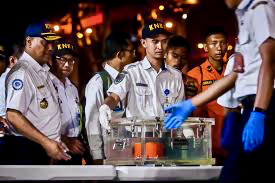 Committee, is currently focusing on the Max 8’s MCAS (Maneuvering Characteristics Augmentation System) anti-stall system, more specifically on the Measured Angle of Attack sensors that provide vital wind speed and direction data to MCAS automated control. Optimally, MCAS processes that data to determine how to angle the airplane’s rear stabilizers, pushing its tail up and nose down if the system detects the danger of a nose-up stall. At issue is the condition of at least one of the sensors which, if malfunctioning, could feed inconsistent or inaccurate, causing the system to pitch the aircraft erroneously with overwhelming force. (sensors supplied by United Technologies; Data processing units by Honeywell International Inc.).
Committee, is currently focusing on the Max 8’s MCAS (Maneuvering Characteristics Augmentation System) anti-stall system, more specifically on the Measured Angle of Attack sensors that provide vital wind speed and direction data to MCAS automated control. Optimally, MCAS processes that data to determine how to angle the airplane’s rear stabilizers, pushing its tail up and nose down if the system detects the danger of a nose-up stall. At issue is the condition of at least one of the sensors which, if malfunctioning, could feed inconsistent or inaccurate, causing the system to pitch the aircraft erroneously with overwhelming force. (sensors supplied by United Technologies; Data processing units by Honeywell International Inc.).
Now comes a finding that one AofA sensor was replaced and/or simply switched on the immediately previous (Bali to Jakarta) leg of 610’s scheduled route plan, due to a 20% discrepancy between the two forward nose housed indicators’ readings. Nevertheless, the Lion pilots should theoretically have been able to counteract, manually override any incorrect MCAS actions and pull out of the resulting dive in several ways: by 1) pressing a stabilizer trim button on the plane’s yoke to circumvent the auto-stabilizer angling, 2) turn off juice to the horizontal stabilizers via trim cutout switches on the cockpit’s center console, or 3) seizing manual control of the errant stabilizers with the cranking of the console’s stabilizer trim wheel.
Why 610’s crew failed or were unable to do so is the crux of the investigation thus far.
Mutual Static Discharge in the Air.
Under initial scrutiny was the maintenance practices of Southeast Asia’s largest passenger air carrier. Jakarta transportation officials have cited a pattern of Lion Air’s operating mantra of marketing over maintenance as the airline pushes route and capacity growth to the max, squeezing costs along the way. A shoddy safety record of 15 major lapses since it first launched, with 25 fatalities. Lion planes overshooting runways, hitting livestock, ground crews hiding defects with double logs: One instance had an Indonesian inspector grounding a 737 with hydraulic failure, only to witness that very craft taking off fully loaded shortly thereafter. Seems Lion Air honchos have the political pull and connections to buy their way while certain government lackeys look the other way.
Yet that still doesn’t explain why 610’s pilots were unable to save their own and over 180 other lives over the Java Sea. Weren’t they aware of MCAS’s auto-correcting tendencies or procedures for counteracting them? Was it a matter of negligence or ill-preparedness on the cockpit crew’s part? Or were they insufficiently trained on the MAX 8’s next-generation technology in the first place?
The investigators’ knee-jerk reaction was to initially blame Lion Air for poor and improper training of their already overstressed pilots. But Lion Air leaders counter that something larger was amiss here than the plummeting of a single 737 Max 8, pointing a finger at the aircraft’s very source—to where they are threatening to cancel some 200 further plane orders from a Chicago-based plane manufacturer that itself has recently questioned Lion Air’s safety and operations.
At issue here is fundamental Max 8 training, as communicated in the manufacturer’s manual. Boeing is increasingly under pressure by Indonesian authorities to explain its treating of MCAS in the latest (Max 8) iteration of the workhorse 737 single aisle model. Investigators join Lion Air in questioning the company’s presentation of the 8’s/9’s brand new anti-stall technology in its training literature, or lack thereof.
They charge that Boeing has downplayed MCAS particulars, as in burying its operational details, along with inconsistent explanation of 8’s EFS (elevator-feel shift) capability. EFS stops pilots from wrongly pulling up the nose of an aircraft already rising toward a stall, but requires specific manual pressure to override its hydraulic force.
Boeing Ain’t Going There.
For its part, Boeing resists suggestions that it has minimized treatment of these stall prevention technologies, so as not to overload airlines and their pilots with ‘burdensome’ details on these complex flight control systems—at the same time working around increased costly and time-consuming simulator training. This, even though such new technologies were never featured in earlier 737s.
The company insists it hasn’t deliberately withheld such key, relevant information from its customers, and 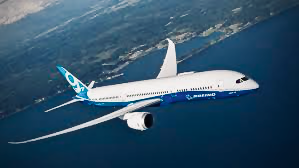 that no other air carriers have expressed concern over the 8’s /9’s advancements. Boeing claims that is goal on the manual has always been to give pilots and maintenance crews all the information needed to safely operate and service the aircraft, despite minimizing MCAS training to several hours of self-instruction on individual computers/devices. But that it has nonetheless addressed anti-stall issues in its training literature all along, by stating that “Response to uncommanded trim is contained in existing procedures”. Still, Indonesian authorities and Lion Air are pushing Boeing for further clarity on its automated flight control issues and procedures in manuals going forward so that JT 610 doesn’t happen again.
that no other air carriers have expressed concern over the 8’s /9’s advancements. Boeing claims that is goal on the manual has always been to give pilots and maintenance crews all the information needed to safely operate and service the aircraft, despite minimizing MCAS training to several hours of self-instruction on individual computers/devices. But that it has nonetheless addressed anti-stall issues in its training literature all along, by stating that “Response to uncommanded trim is contained in existing procedures”. Still, Indonesian authorities and Lion Air are pushing Boeing for further clarity on its automated flight control issues and procedures in manuals going forward so that JT 610 doesn’t happen again.
The plane maker is now working on a software fix to prevent a single AofA sensor of the two from mistakenly kicking in the stall-prevention system. It is said also to be thoroughly reviewing training materials, risk analyses, safety alerts and airworthiness directives.
Beyond that, the F.A.A. is being tasked with explaining how it approved an MCAS in which a single bad or blocked sensor, a single point of failure, on indicators first employed in 2013 (to 737s/747s and Airbus 319s and 320s alike, immediately drawing regulatory directives on potential problems) can lead to catastrophic dives.
Two-Fisted, Full-Throttle Flying.
Hardly debatable, however, is the reality that increasingly complex computer technology necessitates a commensurate degree of comprehensive cockpit training—evidently lacking in the case of JT 610.
Which means certifying not only in touch-screen interfaces and uber sophisticated software, but the traditional hand-eye piloting skills to adjust and override should the technology somehow 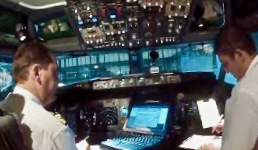 malfunction. In other words, expertly grabbing the yoke when the system goes to broke.
malfunction. In other words, expertly grabbing the yoke when the system goes to broke.
All encompassing cockpit automation, coupled with maximum performance jet engines make such high-tech + fundamental piloting expertise an essential formula, particularly for commercial flight crews. This combination skillset also informs Boeing and Airbus SE aircraft design and production, a critical balance of hands-off competence with hands-on control.
The looming cockpit problem? Since Airbus introduced fly-by-wire technology about 30 years ago, automated systems have assumed more and more airplane direction, takeoffs to landings. Through scripted training, pilots have since been prepared to basically monitor processes and progress as their aircraft all but fly themselves—only manually controlling the plane for scant minutes of a trip, even in conditions of zero visibility.
When There’s no Joy at the Joystick.
This hands-free approach to pilot training has been blue sky, at best. Because preparation for what aviators must confront and remedy when these computer-automated systems fail to fly right has apparently been found lacking heretofore, at least at Lion Air. In essence, what needs to be done procedurally when fault messages and warning signals emerge? For that’s when screen lulled, if not inadequately schooled cockpits can be overwhelmed by a scramble to disengage the malfunctioning automation system and physically regain control of their aircraft.
Automated safeguards such as stall control, midair collision avoidance, runway braking sensors are clearly key components of modern commercial aviation. But as demonstrated by past fatal airliner accidents—involving flight crews wrestling with autopilot, auto-throttle snafus (Air France A330 in 2009, Asiana 777 in 2013)—thoroughly balanced pilot training must go hand-in-hand. 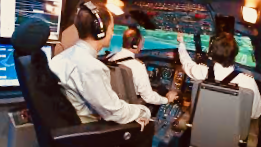
Indeed, despite vast improvements in flight safety over the long haul, 2018 saw a marked increase in air crash fatalities, particularly those determined to have been caused by aircraft loss of control (LOC), according to Aviation Safety Network data.
Add to this the Boeing/industry projection that some 3/4 million new pilots will be needed globally in the next 20 years; and they will require balanced, hands-on training well beyond simulator computer screens alone.
Thus Vamigré will duly monitor these training regimens: school by school, plane maker by maker, airline by line. Seeing to it that the Lion, et al. will not sleep on fail-safe cockpit performance tonight.
Whether Forecast: Holding Patterns Ahead.
As of now, the head of Indonesia’s Transportation Safety Committee maintains that the “(Lion) pilots fought (the aircraft) continuously until the end of flight, but MCAS reactivated each time”. However as usual, its final determination on this crash is at least months away. Yet further investigation by Indonesian authorities points toward a failure by LionAir maintenance crews to properly calibrate replacement AofA airspeed sensor settings, thereby setting the stage for the faulty MCAS readings that pushed the plane’s nose down, and pilots’ frantic, futile manual counteraction to right its fatal dive. Indonesian investigators, Boeing and the NTSB have not commented on the calibration finding any further.
So Vamigré will watch and see whether any and all further analyses and reassurances fly, and how/where the JT 610 saga makes headway from here—bank on it…
<< Accident Update: A Lion In Wait.
<<< ACCIDENT Update: Deadly SWA 737 Engine, Window Blow-out.
